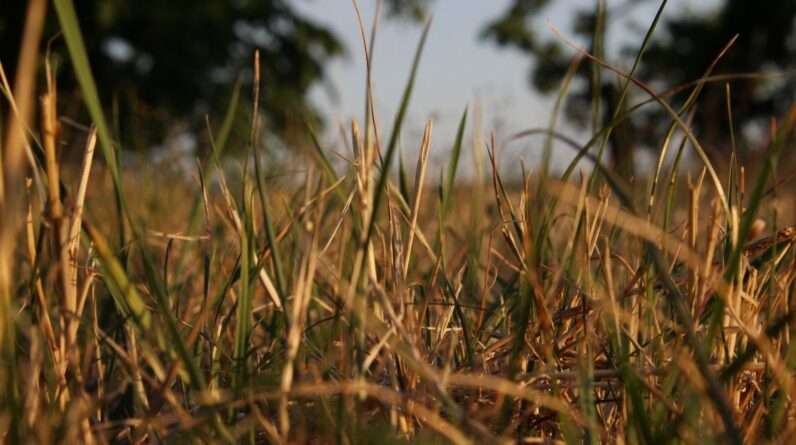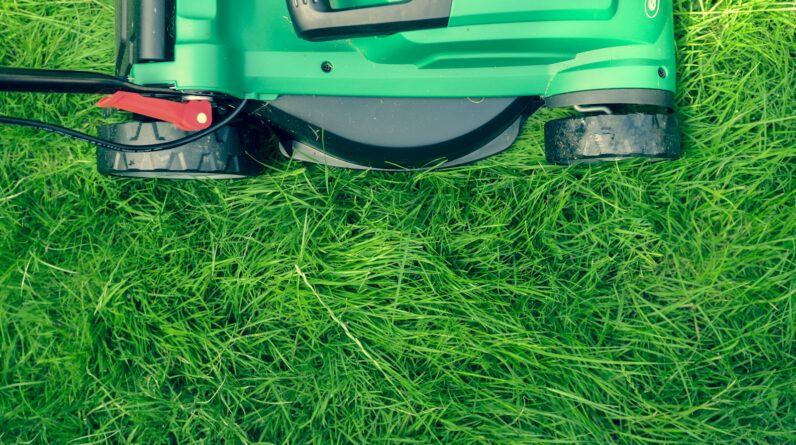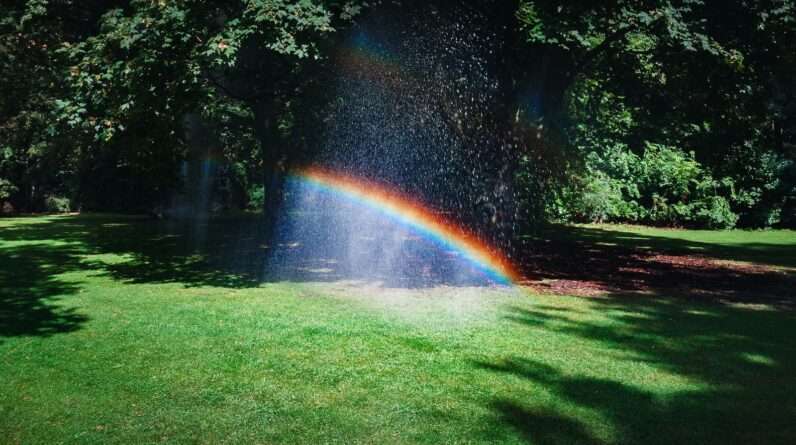
Are you tired of battling with weeds, struggling to revive yellowing grass, or dealing with pesky insect infestations on your lawn? Look no further! Our troubleshooting guide is here to help you master the art of solving common lawn problems.
With expert tips and detailed instructions, you’ll be able to:
- Identify and eliminate unwanted plants
- Restore full coverage to patches and bare spots
- Diagnose nutrient deficiencies
- Control lawn diseases
- And more.
Get ready to transform your lawn into a lush, healthy oasis!
Key Takeaways
- Regularly check the lawn for signs of weeds and promptly remove them to prevent further spread.
- Choose between chemical herbicides or organic alternatives for weed elimination.
- Regularly mow the lawn at the recommended height to prevent weed growth.
- Identify nutrient deficiencies causing yellowing grass and address them through proper fertilization.
Weeds: Identifying and Eliminating Unwanted Plants
You should start by checking your lawn regularly for any signs of weeds and promptly removing them to prevent further spread. Weed control is an essential part of maintaining a healthy and beautiful lawn.
To identify weeds, look for any plants that are growing where they shouldn’t be or have different characteristics from the rest of your grass. Once you’ve identified the weeds, there are various methods of elimination.
While chemical herbicides are commonly used, organic alternatives are gaining popularity among those seeking a more natural approach. These can include manual removal, using boiling water or vinegar-based solutions, and applying organic weed killers. By incorporating these organic alternatives into your weed control routine, you can maintain a healthy lawn without relying on harmful chemicals.
Now, let’s move on to the next section: restoring full coverage in patches and bare spots.
Patches and Bare Spots: Restoring Full Coverage
To restore full coverage in patches and bare spots, apply a thin layer of topsoil or compost to even out the surface and promote grass growth. This will provide a fertile environment for reseeding techniques and the utilization of effective lawn care products.
Here are three key steps to help you achieve lush and healthy grass:
- Prepare the area:
- Remove any debris or dead grass from the patches and bare spots.
- Loosen the soil with a rake to create a smooth surface for reseeding.
- Reseeding:
- Choose a high-quality grass seed that’s suitable for your climate and soil type.
- Spread the seed evenly over the prepared area, making sure to cover all the bare spots.
- Maintenance:
- Water the reseeded areas regularly to keep the soil moist.
- Use a gentle sprinkler or misting nozzle to prevent seed displacement.
- Apply a slow-release fertilizer to provide essential nutrients for healthy grass growth.
By following these steps, you can restore full coverage to your lawn and enjoy a beautiful and vibrant landscape.
Now, let’s transition to the next section: diagnosing and treating nutrient deficiencies in yellowing grass.
Yellowing Grass: Diagnosing and Treating Nutrient Deficiencies
If you notice yellowing grass in your lawn, it’s important to identify the nutrient deficiencies that may be causing this issue. Treating yellowing grass starts with understanding the nutrients your lawn needs to thrive and prevent deficiencies.
Nitrogen is essential for healthy green grass, so make sure your lawn receives enough of it through regular fertilization. Iron deficiency can also cause yellowing, so consider using iron supplements to restore the vibrant green color. Other key nutrients to consider are phosphorus, potassium, and magnesium. Adequate watering and proper soil pH are also crucial for nutrient absorption.
Preventing nutrient deficiencies involves regular soil testing and adjusting fertilization accordingly. By addressing nutrient deficiencies, you can restore the health and beauty of your lawn.
Now, let’s transition into the subsequent section about ‘lawn diseases: recognizing and controlling fungal infections’.
Lawn Diseases: Recognizing and Controlling Fungal Infections
Take proactive steps to identify and treat lawn diseases caused by fungal infections. Fungal growth can quickly spread and damage your lawn if left untreated. By following proper lawn care techniques, you can effectively control and prevent fungal infections. Here are three key steps to help you combat lawn diseases:
- Regularly inspect your lawn: Conduct a thorough visual inspection of your lawn to look for signs of fungal infections. Look for discolored patches, brown spots, or areas of thinning grass. Early detection is crucial to preventing the spread of diseases.
- Practice good lawn maintenance: Keep your lawn well-maintained by mowing at the appropriate height, watering deeply but infrequently, and ensuring proper soil drainage. Healthy lawns are less susceptible to fungal infections.
- Use fungicides when necessary: If you notice signs of fungal growth, apply a suitable fungicide according to the manufacturer’s instructions. Fungicides can help control the spread of diseases and protect your lawn from further damage.
Insect Infestations: Dealing With Common Lawn Pests
You should regularly inspect your lawn for signs of insect infestations, especially during the summer months when pests are most active. Preventing infestations is crucial to maintaining a healthy and vibrant lawn.
There are several natural pest control methods you can employ to keep your lawn free from harmful insects.
Firstly, promoting a diverse and balanced ecosystem in your lawn can help prevent infestations. This can be achieved by planting a variety of flowers, herbs, and shrubs that attract beneficial insects, such as ladybugs and lacewings, which feed on pests.
Secondly, practicing proper lawn maintenance is essential. Regularly mowing your lawn at the appropriate height and removing debris can eliminate hiding places for insects. Additionally, watering your lawn deeply and infrequently can help discourage pests, as excessive moisture can attract them.
Lastly, using natural pest control products, such as neem oil or insecticidal soap, can effectively target and eliminate specific pests without harming beneficial insects.
Overgrown and Patchy Lawns: Tips for Proper Mowing and Maintenance
To maintain an overgrown and patchy lawn, start by regularly mowing and maintaining proper height, but also ensure you follow these additional maintenance tips:
- Aerate the soil: Compacted soil can hinder healthy turf growth. By aerating your lawn, you allow air, water, and nutrients to penetrate deeper into the soil, promoting stronger root development and overall lawn health.
- Overseed bare patches: Overgrown lawns often have bare patches due to poor maintenance. Overseeding these areas with the appropriate grass seed can help fill in the gaps and create a more uniform and lush lawn.
- Fertilize regularly: Proper nutrition is essential for maintaining healthy turf. Use a high-quality lawn fertilizer that’s specifically formulated for your grass type and apply it according to the recommended schedule. This will provide your lawn with the necessary nutrients to thrive and outcompete weeds.
Watering Woes: Solving Issues With Irrigation and Drainage
If you’re experiencing watering woes, consider adjusting your irrigation system and improving drainage to ensure your lawn receives the right amount of water.
Achieving irrigation efficiency is crucial for maintaining a lush and healthy lawn. Start by inspecting your sprinkler heads to ensure they’re functioning properly and distributing water evenly. Make necessary adjustments to the direction and range of the spray to avoid overspray or dry spots. Additionally, check for any leaks or clogs in the system that may be causing water waste.
When it comes to drainage solutions, evaluate the slope of your lawn to ensure water is flowing away from your home. Installing French drains or using gravel-filled trenches can help redirect excess water and prevent pooling.
Frequently Asked Questions
How Often Should I Water My Lawn During the Summer Months?
During the summer months, you should water your lawn regularly to maintain its hydration. A proper lawn watering schedule is essential for keeping your grass healthy and vibrant.
What Is the Best Way to Prevent Weeds From Growing in My Lawn?
To prevent weeds from taking over your lawn, there are several effective methods you can try. Using organic weed control techniques such as mulching, hand pulling, and applying vinegar can help keep your lawn weed-free.
How Can I Tell if My Lawn Has a Fungal Infection?
If your lawn has a fungal infection, there are some signs to look out for. These include discolored patches, thinning grass, and a musty odor. Effective treatments include fungicides and improving cultural practices like watering and mowing.
Are There Any Natural Remedies for Treating Insect Infestations in My Lawn?
To naturally tackle insect infestations in your lawn, there are several organic pest control methods you can try. Utilize natural insect repellents like neem oil or garlic spray to keep those pesky critters at bay.
What Are Some Common Mistakes to Avoid When Mowing and Maintaining My Lawn?
When it comes to mowing and maintaining your lawn, there are some common mistakes to avoid. These include cutting the grass too short, mowing when it’s wet, and neglecting proper watering and fertilization.












